The Streak Continues: 253
This post was published just before 8:15am from my home at Indian Lake Estates, FL. Yesterday was a very relaxing one followed by another good night’s sleep. This post, which took me more than 5 hours to prepare due to an almost endless variety of snafus, marks 253 consecutive days with a new enjoyable and educational blog post.
With so many folks getting in the habit of using our B&H links and our Amazon logo-links, why quit now? April, May, and June were fantastic. July was good. Lots of folks are getting the message: using my affiliate links does not cost you a penny and helps support my efforts here. To show your appreciation, I do ask that you use our B&H and Amazon affiliate links on the right side of the blog for all of your purchases. Please check the availability of all photographic accessories in the BIRDS AS ART Online Store, especially Gitzo tripods, Wimberley tripod heads, and the like. We sell only what I have used and tested, and know that you can depend on. We will not sell you junk. We know the tools that you need to make creating great images easy and fun. And we are always glad to answer your gear questions via e-mail.
You can find the following items in the store: Gitzo tripods, Mongoose M3.6 and Wimberley heads, plates, low feet, and accessories, flash brackets, , Delkin e-film Pro Compact Flash Cards, LensCoat products, and our unique line-up of educational materials including ABP I & II, Digital Basics, Site and Set-up e-Guides, Canon and Nikon Camera Users and AF e-Guides, and MP-4 Photoshop video tutorials among others.
I would of course appreciate your using our B&H affiliate links for all of your major gear, video, and electronic purchases. For the photographic stuff mentioned in the paragraph above we, meaning BAA, would of course greatly appreciate your business. Here is a huge thank you to the many who have been using our links on a regular basis and visiting the BAA Online store as well.
JBWR & Nickerson Beach Short-Notice Workshop Opportunities
For information on mid-August Jamaica Bay Wildlife Refuge In-the Field Morning Sessions and the 2-DAY Nickerson Beach IPT click here and scroll down.
|
This diagram maps out the five images that caught my eye on that fine morning. Note that I used the tall hill in the center as a major compositional element in each image that I created. The lovely curved line that separated the green vegetation from the adjacent plowed field was quite sensuous. Read on for the details. Click on the image to enlarge. |
Learning to Think and See Like a Pro/The Fourth of a Series
In the Learning to Think and See Like a Pro/The Fourth of a Series blog post here, I wrote with in reference to the then-unadorned image above:
Here is the challenge: click on the image above to enlarge it. Examine it carefully. You have access to all focal lengths from 70mm to 784mm in the form of a 70-200 II and a 200-400 with Internal TC along with an external 1.4X III. The latter covers from 200-784mm in its various configurations. What catches your eye? What images would you extract from the scene? Please leave a comment and please be specific. I will share several of the images that I created that morning with you in this coming Saturday’s blog post. Suggestions for creating pleasing blurs are of course welcome.
Lots of folks left thoughtful comments that hit upon many of the interesting features in the scene. Below I share my four favorite images from that situation along with a digital creation of Image #4. .
|
This three-frame Art Vivid HDR image was created on last June’s Palouse scouting trip with the Gitzo 3532 LS carbon fiber tripod, the Mongoose M3.6 head, Canon EF 200-400mm f/4L IS USM lens with Internal 1.4x Extender (at 200mm) and the Canon EOS 5D Mark III . ISO 400. Evaluative metering +1 1/3 stops +/- two stops around the base exposure of 1/60 sec. at f/22 in Av mode. Color temperature 4500K. Live View and 2-second timer. Central Sensor/Surround/AI Servo-Rear Focus AF on the near-corner of the blue roof and re-compose. Click here to see the latest version of the Rear Focus Tutorial. Click on the image to see a larger version.
|
Image #1 (framed in yellow) Questions
This was the first image that I made.
1-Why did I move so far to the left?
2-Why did I raise my tripod as high as possible?
3-What is the greatest strength of this composition?
Clue: the answer to all three questions is the same….
|
This three-frame Art Vivid HDR image was created on last June’s Palouse scouting trip with the Gitzo 3532 LS carbon fiber tripod, the Mongoose M3.6 head, the Canon EF 70-200mm f/2.8L IS II USM lens (at 95mm) and the Canon EOS 5D Mark III . ISO 400. Evaluative metering +1 stop +/- two stops around the base exposure of 1/40 sec. at f/32 in Av mode. Color temperature 4500K. Live View and 2-second timer. Central Sensor/Surround/AI Servo-Rear Focus AF on the nearest corner of the blue roof and re-compose. Click here to see the latest version of the Rear Focus Tutorial. Click on the image to see a larger version.
|
Image #2 (framed in lime green) Questions
1-Why is Image #1 much stronger than Image #2?
2-Did I move my tripod at all after I created Image #1?
3-How do you know?
|
This three-frame Art Vivid HDR image was created on last June’s Palouse scouting trip, this one with the Gitzo 3532 LS carbon fiber tripod, the Mongoose M3.6 head, Canon EF 200-400mm f/4L IS USM lens with Internal 1.4x Extender (with the internal extender engaged), the Canon Extender EF 1.4X III (at 552mm), and the Canon EOS 5D Mark III . ISO 400. Evaluative metering +2 1/3 stops +/- two stops around the base exposure of 1/80 sec. at f/16 in Av mode. Color temperature 4500K. Live View and 2-second timer. Central Sensor/Surround/AI Servo-Rear Focus AF on the curve lower left near the rule-of-thirds position and re-compose. Click here to see the latest version of the Rear Focus Tutorial. Click on the image to see a larger version.
|
Image #3 (framed in orange)
The sensuous curve in this, the tightest framing, caught my eye more than any single element in the wide scene. That is why I opted to include it in every image.
|
This three-frame Art Vivid HDR image was created on last June’s Palouse scouting trip with the Gitzo 3532 LS carbon fiber tripod, the Mongoose M3.6 head, Canon EF 200-400mm f/4L IS USM lens with Internal 1.4x Extender (at 400mm) and the Canon EOS 5D Mark III . ISO 400. Evaluative metering +2 1/3 stops +/- two stops around the base exposure of 1/250 sec. at f/11 in Av mode. Color temperature 4500K. Live View and 2-second timer. Central Sensor/Surround/AI Servo-Rear Focus AF on the curve lower left near the rule-of-thirds position and re-compose. Click here to see the latest version of the Rear Focus Tutorial. Click on the image to see a larger version.
|
Image #4 (framed in black)
Image #3 is the tight view. Image #4 is a wider view. Image #3 offers the greatest detail in both the green vegetation and the plowed dirt field. Image #4 features much of the same plus a thin green strip in the lower right. Which of these two images do you like best? Why?
|
This three-frame Art Vivid HDR image was created on last June’s Palouse scouting trip with the Gitzo 3532 LS carbon fiber tripod, the Mongoose M3.6 head, the Canon EF 70-200mm f/2.8L IS II USM lens (at 125mm) and the Canon EOS 5D Mark III . ISO 400. Evaluative metering +1 2/3 stops +/- two stops around the base exposure of 1/60 sec. at f/22 in Av mode. Color temperature 4500K. Live View and 2-second timer. Central Sensor/Surround/AI Servo-Rear Focus AF on the apex of the green curve on the lower right and re-compose. Click here to see the latest version of the Rear Focus Tutorial. Click on the image to see a larger version.
|
Image #5 (framed in blue)
This image was cropped from below to a pano. Note the inclusion of the complete curve of green vegetation that was missing in Image #2.
HDR Art Vivid Question
Why were all of the HDR Art Vivid images presented here created at Color Temperature 4500K?
|
Image #6
Image #6 was Created in Photoshop from Image #5 using Filter/Blur/Motion Blur and then adjusting the Distance slider to about 75. Though I created more than a dozen pleasing blurs of the area in Image 5, the Photoshop-created version was my favorite by far.
Your Favorite?
Take a moment to leave a comment and let us know which of the six images here is your favorite and why.
Used Photography Gear for Sale
Though we have sold a boatload of great gear recently, there are still some great buys available. Click here to see the complete listings. Below is today’s featured item.
|
Card and design by Denise Ippolito. Scroll down here to see lots more of Denise’s Palouse images. Note that the dates on Denise’s card are for the first Palouse IPT that is sold out with a long waiting list. The dates for the 2nd IPT are June 5-9, 2015. See below for complete details. |
The Palouse A Creative Adventure/BIRDS AS ART Instructional Photo-Tour (IPT)/Eastern Washington State. May 29-June 2, 2015/5 Full Days: $1699/Limit 12 photographers/Sold Out with a long waiting list
As the trip above sold out quickly and now has a long waiting list we scheduled a second trip after giving ourselves 2 days to recover from the first one. We have already sold eight slots for the 2nd Palouse trip so please do not tarry if you wish to join us. There will not be a third trip. 🙂 See the details below.
|
Please note that there are two Palouse IPTs in place; the first has been sold out with a waiting list for some time. We hope that you can join us for IPT #2: Card and design by Arthur Morris/BIRDS AS ART. |
The Palouse A Creative Adventure/BIRDS AS ART Instructional Photo-Tour (IPT #2)/Eastern Washington State. June 5-9, 2015/5 Full Days: $1699/Limit 12 photographers/Openings 4; this trip is a go.
Rolling farmlands provide a magical patchwork of textures and colors, especially when viewed from the top of Steptoe Butte where we will likely enjoy spectacular sunrises and possibly a nice sunset or two. We will photograph grand landscapes and mini-scenics of the rolling hills and farm fields. We will take you to some really neat old abandoned barns and farmhouses in idyllic settings. There is no better way to improve your compositional and image design skills and to develop your creativity than to join us for this trip. Two great leaders: Denise Ippolito and Arthur Morris. Photoshop and image sharing sessions when we have the time and energy…. We get up early and stay out late and the days are long.
After 6 days of back-breaking scouting work in early June 2014 we found all of the iconic locations and, in addition, lots of spectacular new old barns and breath-taking landforms and views. We will teach you what makes one situation prime and another seemingly similar one a waste of your time.
What’s included: In-the-field instruction, guidance, lessons, and inspiration, our newfound but very extensive knowledge of the area, all lunches, motel lobby breakfasts, and Photoshop and image sharing sessions when possible.
You will learn and hone both basic and advanced compositional and image design skills. You will learn to get the right exposure every time. You will learn to develop your creative eye. You will learn the basics of HDR (high dynamic range) photography. You will learn a variety of in-camera creative techniques; Canon 5D Mark III bodies are a plus. And most importantly you will learn to see the situation and to create a variety of top-notch images. Do see both of our blogs for lots more on that in the coming weeks. You will learn how the quality and direction of light combine to determine the success of your images. And–please don’t gasp–we will be working quite a bit with sidelight when creating landscapes. Lastly, we will be touching on infrared photography.
A non-refundable $699 deposit is due now. The balance will be due on January 29, 2015. With the unpredictable nature of the photography business, I have not said this often lately, but it seems quite likely that this one will fill up very quickly. Please let me know via e-mail that you will be joining us. Then you can either call Jim or Jennifer at 863-692-0906 during business hours or send us a check; the latter is preferred.
Please send your deposit check made out to “Arthur Morris” to us at Arthur Morris/BIRDS AS ART, PO Box 7245, Indian Lake Estates, FL, 33855. If you have any questions, please feel free to contact me via e-mail. You can also contact denise via e-mail here
Be sure to like and follow BAA on Facebook by clicking on the logo link upper right. Tanks a stack!
Support the BAA Blog. Support the BAA Bulletins: Shop B&H here!
We want and need to keep providing you with the latest free information, photography and Photoshop lessons, and all manner of related information. Show your appreciation by making your purchases immediately after clicking on any of our B&H or Amazon Affiliate links in this blog post. Remember, B&H ain’t just photography!
Amazon Canada
Many kind folks from north of the border, ay, have e-mailed stating that they would love to help us out by using one of our affiliate links but that living in Canada and doing so presents numerous problems. Now, they can help us out by using our Amazon Canada affiliate link by starting their searches by clicking here. Many thanks to those who have written.
Typos
In all blog posts and Bulletins, feel free to e-mail or to leave a comment regarding any typos, wrong words, misspellings, omissions, or grammatical errors. Just be right. 🙂

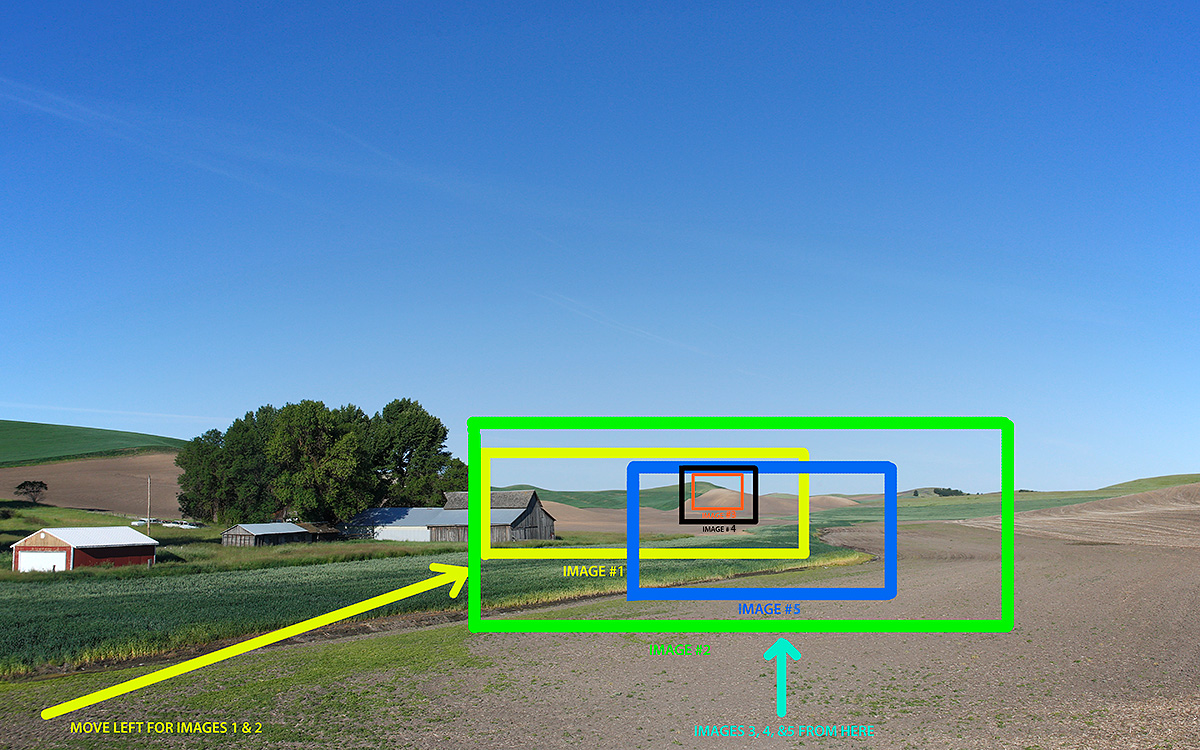
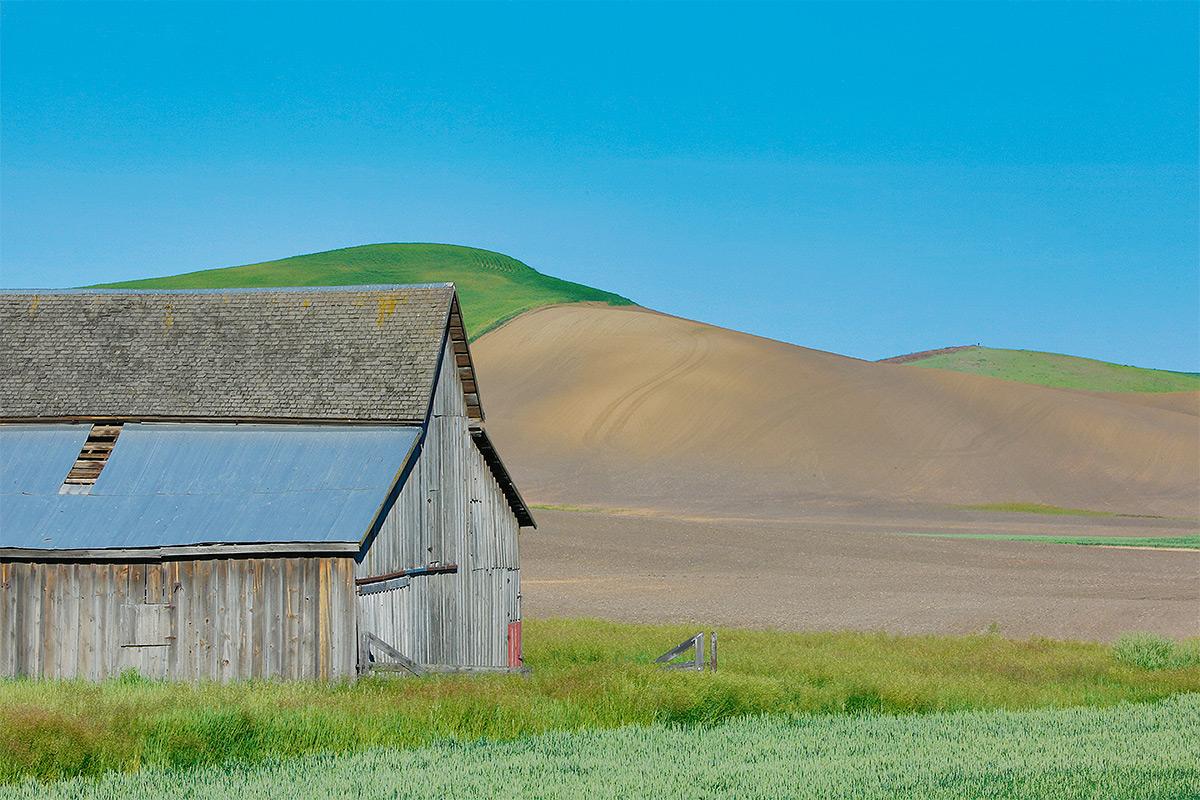
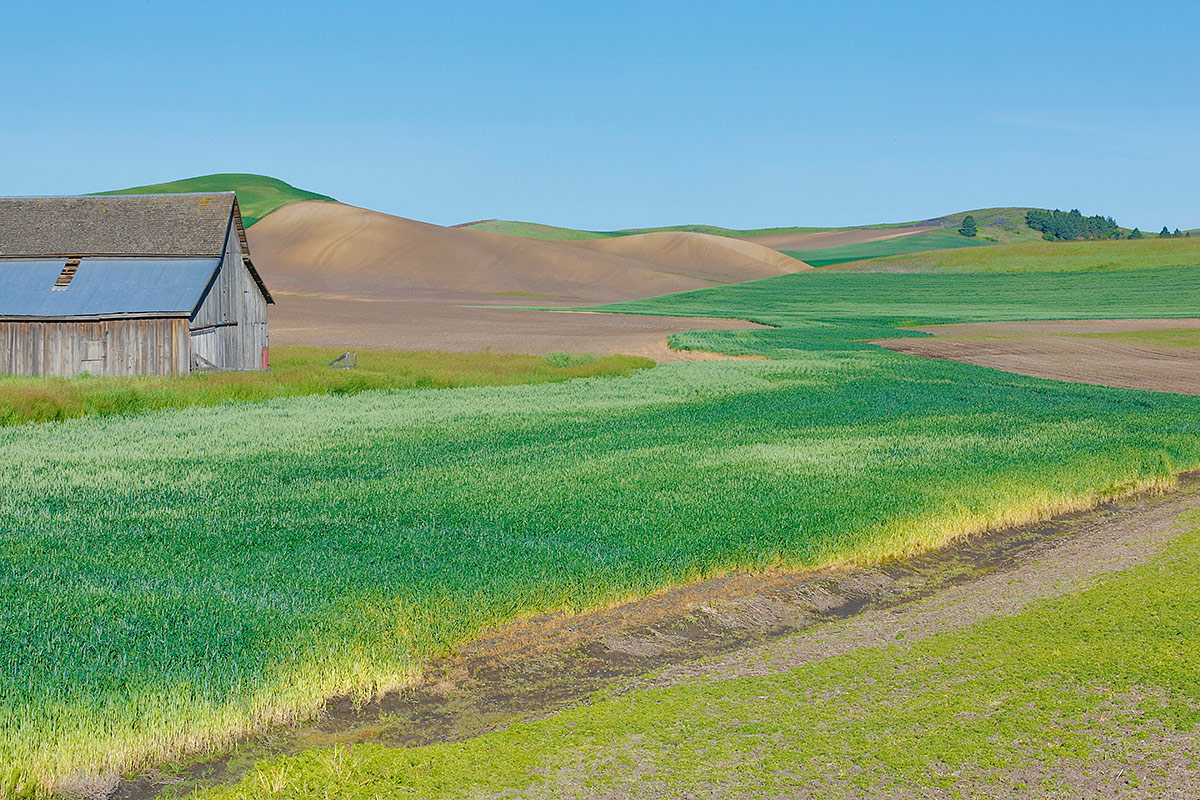
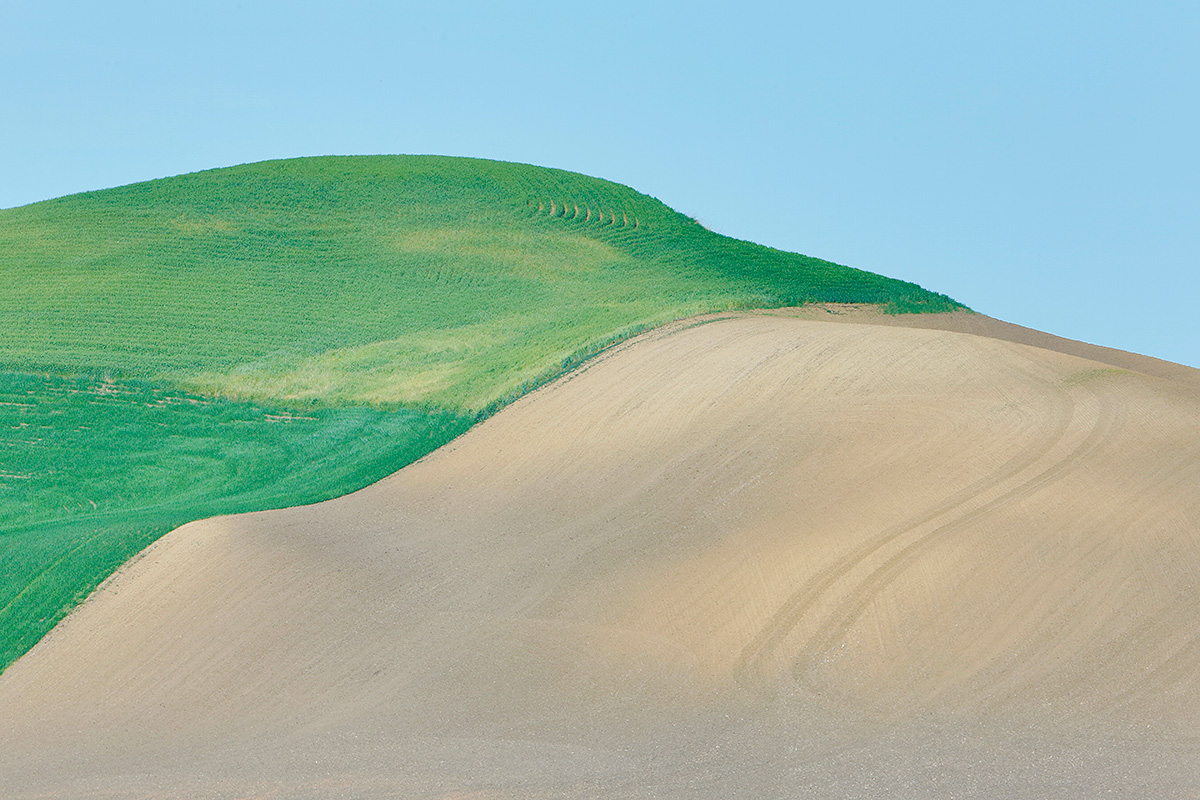
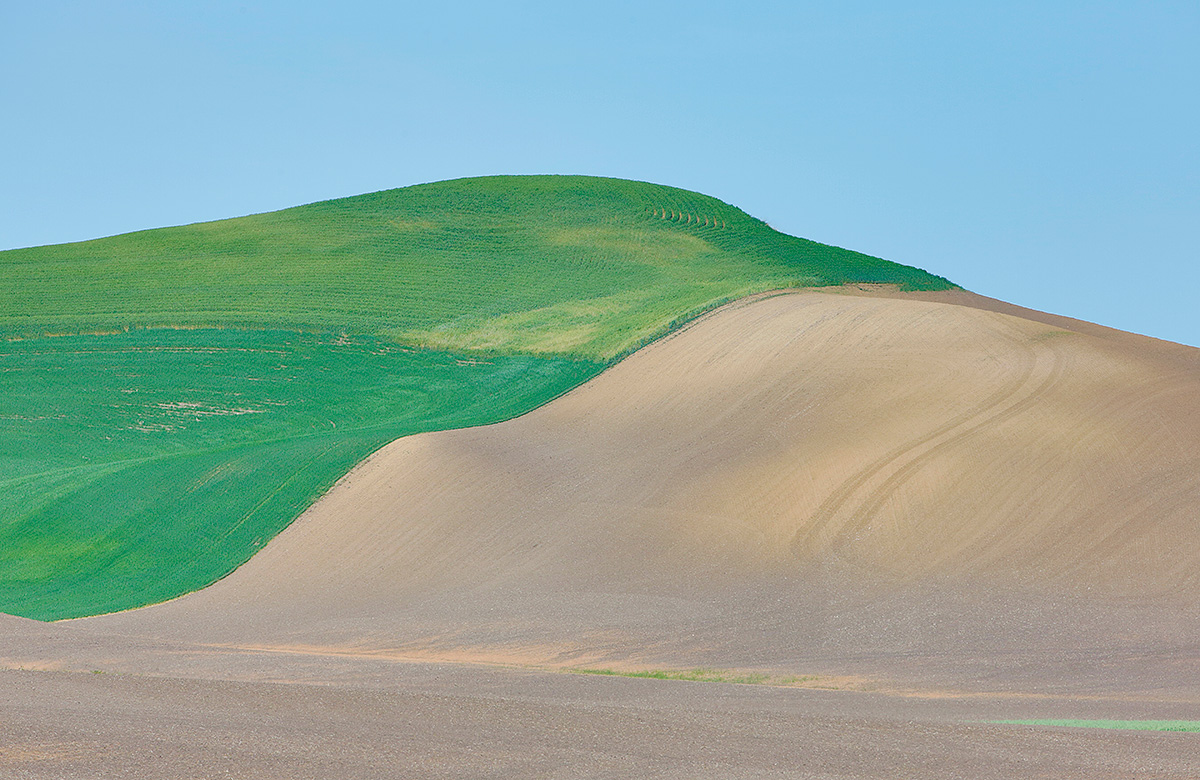
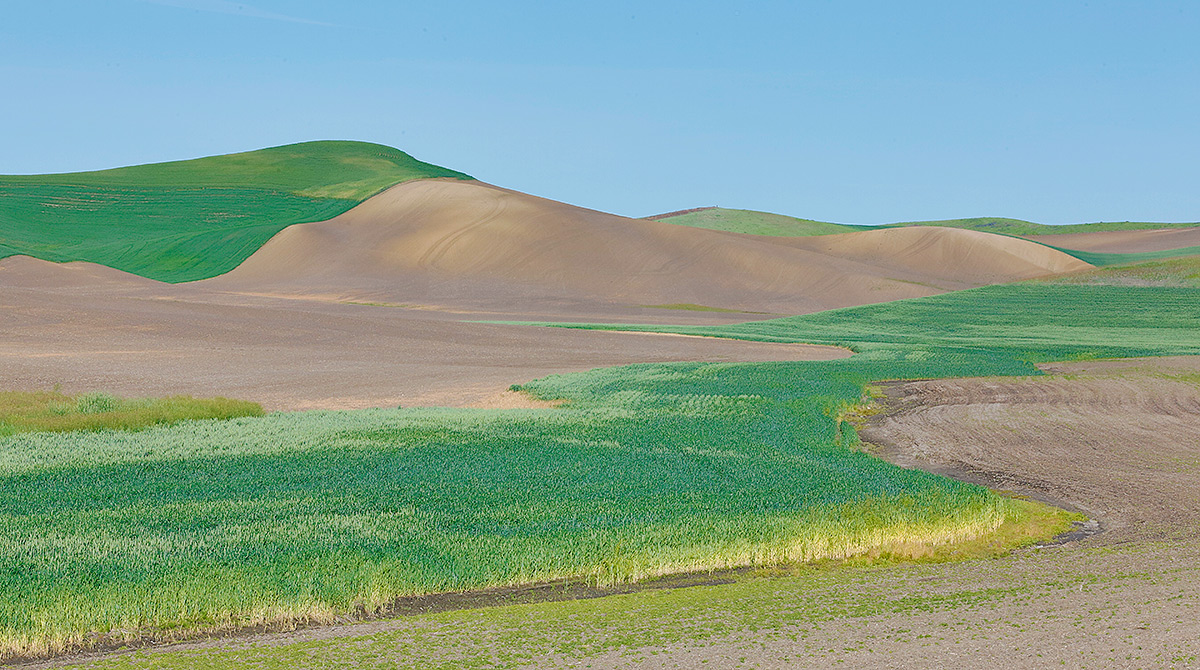
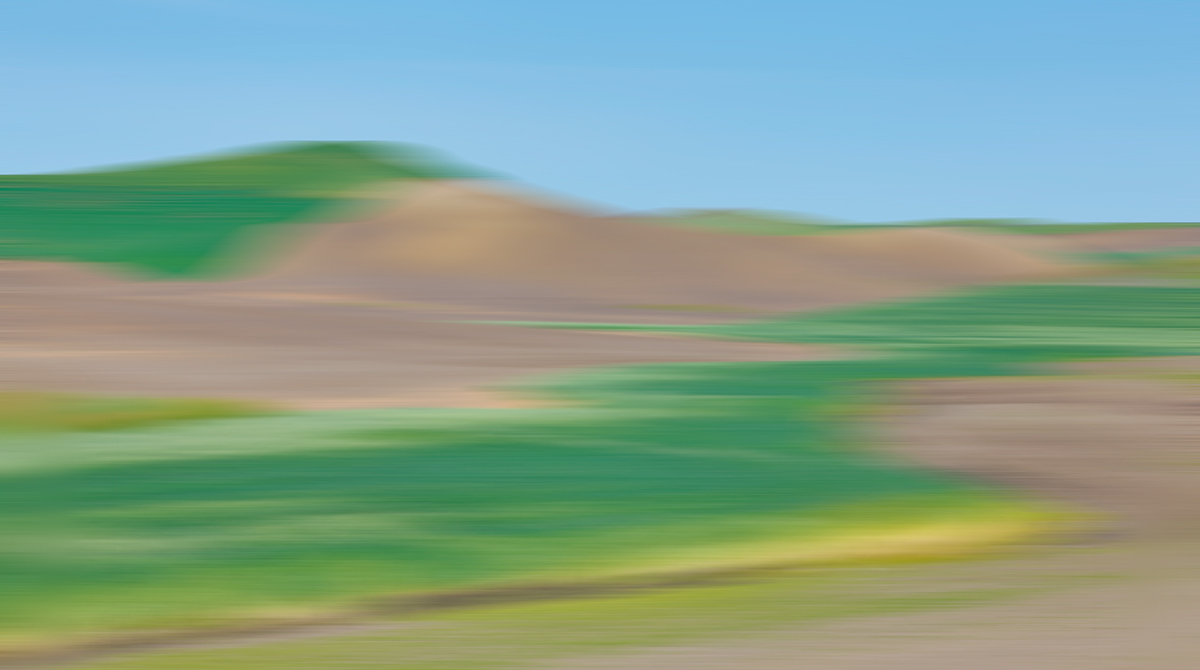
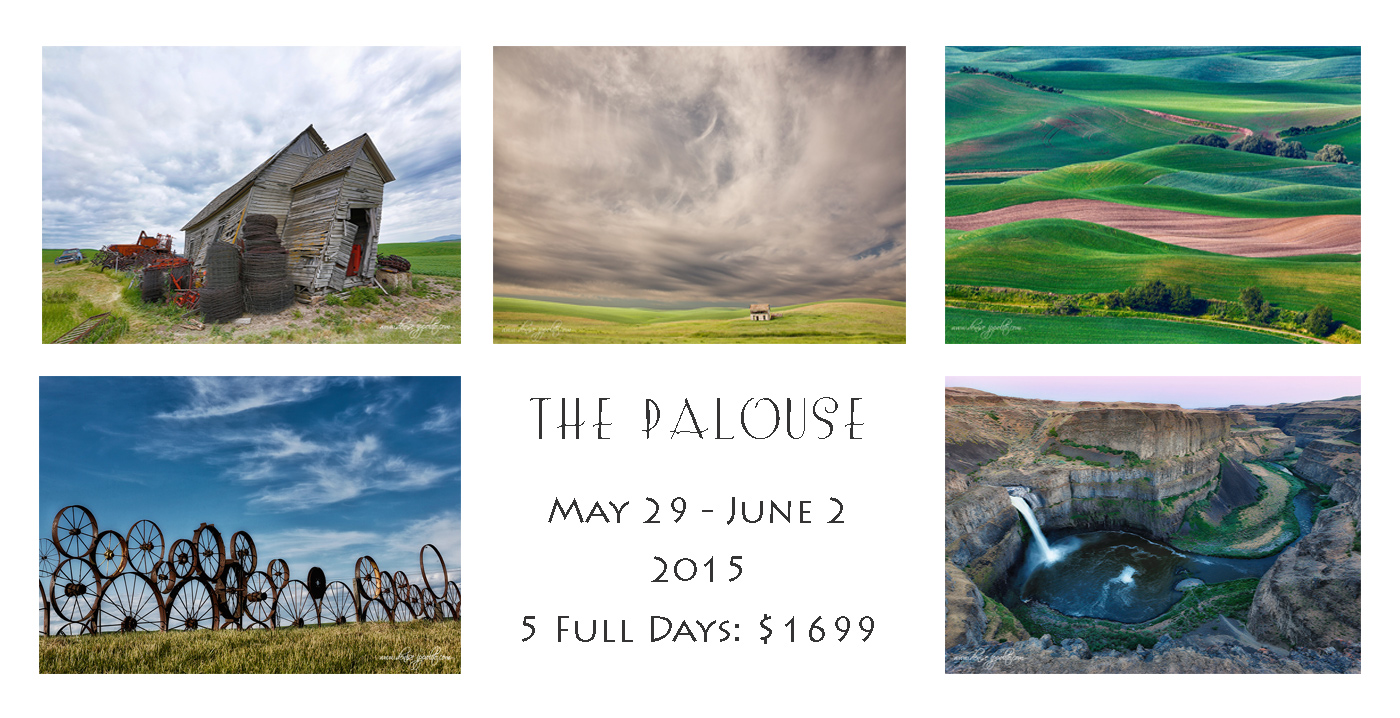
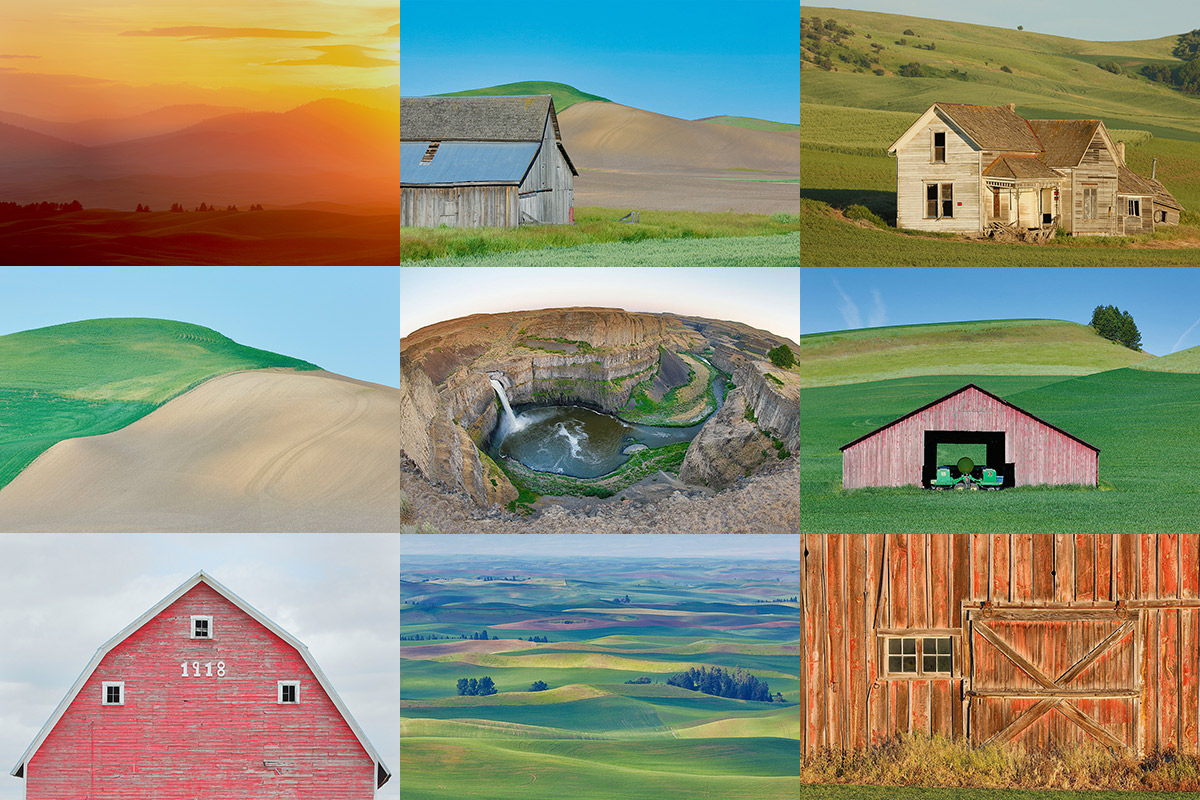













Answer to questions about image 1, moved to the left to include part of the barn on the left side of the picture, had the max height of the tripod to capture the barn from as high as possible. Strength is the line of the roof intersecting with the line between the green and brown on the hill.
My daughter just spent 5 years as a student at WSU in the heart of the Palouse. Ergo, I spent quite a bit of time there also, climbing Kamiak Butte, etc. It is truly beautiful countryside and everyone is going to love the beauty of it.
My favorites are #1 and #3.
#i because I like old barns and like the straight lines of the barn with the hill’s curving lines behind it, and like the narrow strip of green mid-right. That strip and the far right hill seem to balance the barn.
#3 has such beautiful curving lines. When I looked for lines making triangles etc. I suddenly saw a big green bird with bill pointing right and a light colored oblong eye and light colored throat, and light eyeline made by crop rows. Even though I liked the thin green line on the right in #1, in #4 is pulled my eye from the curving lines.
Image No 5 looks like you had one too many at lunch time, Artie.
Hi Betty, Thanks for sharing your thoughts. It looks as if you may have had too many at breakfast as I believe that you are referring to Image #6, which BTW, I like 1000 times better than Image #5. 🙂 art
You are right Artie.
I really must stop drinking before lunch.
Do you think being sober would improve the appearance of No6?
https://www.birdsasart-blog.com/baa/wp-includes/images/smilies/icon_smile.gif